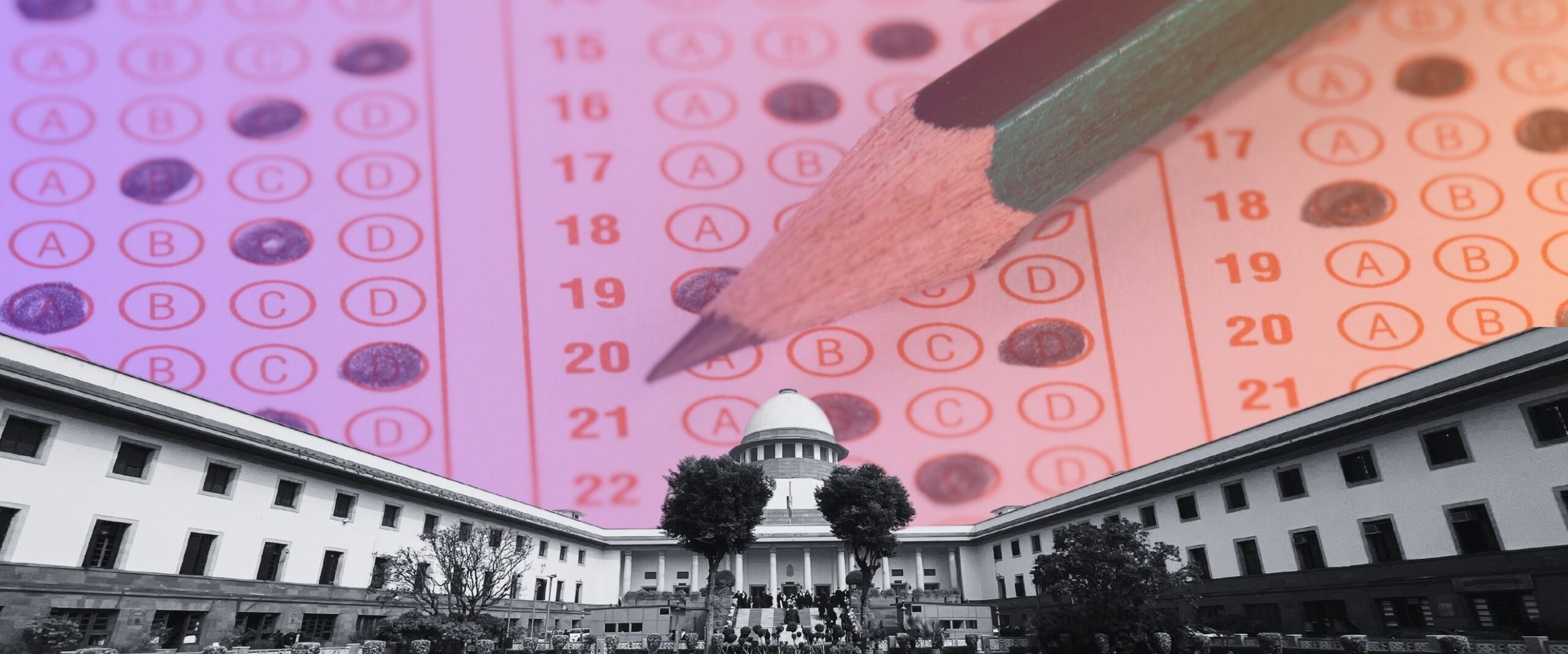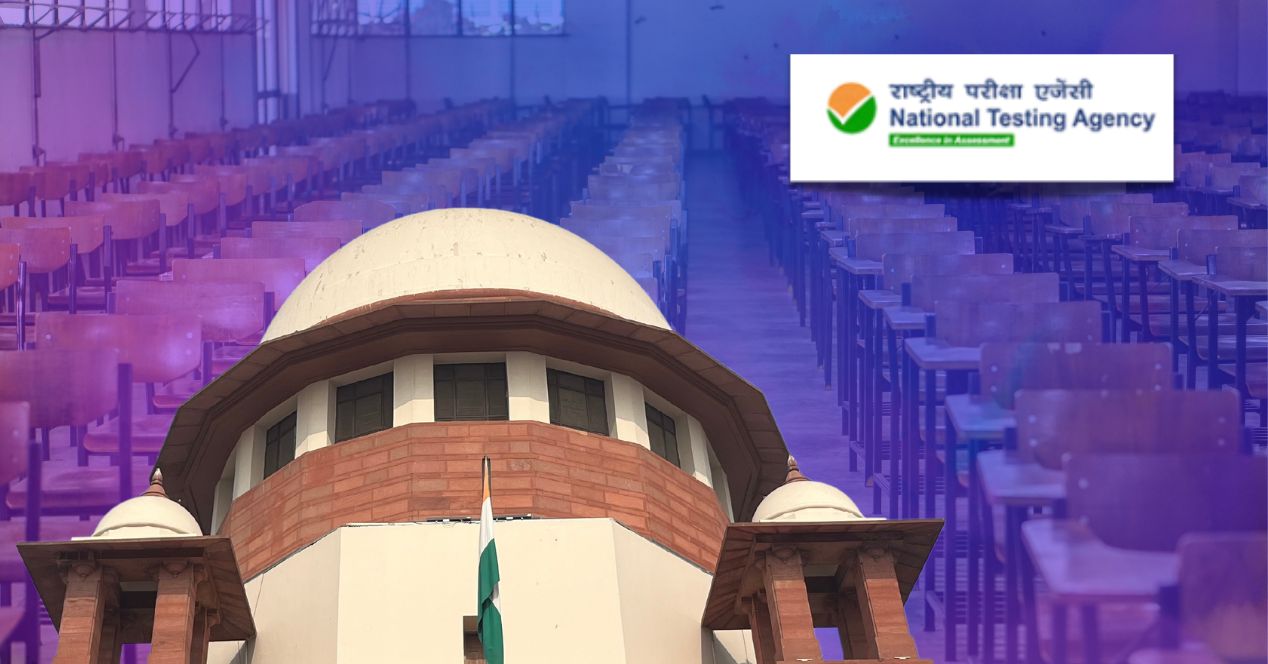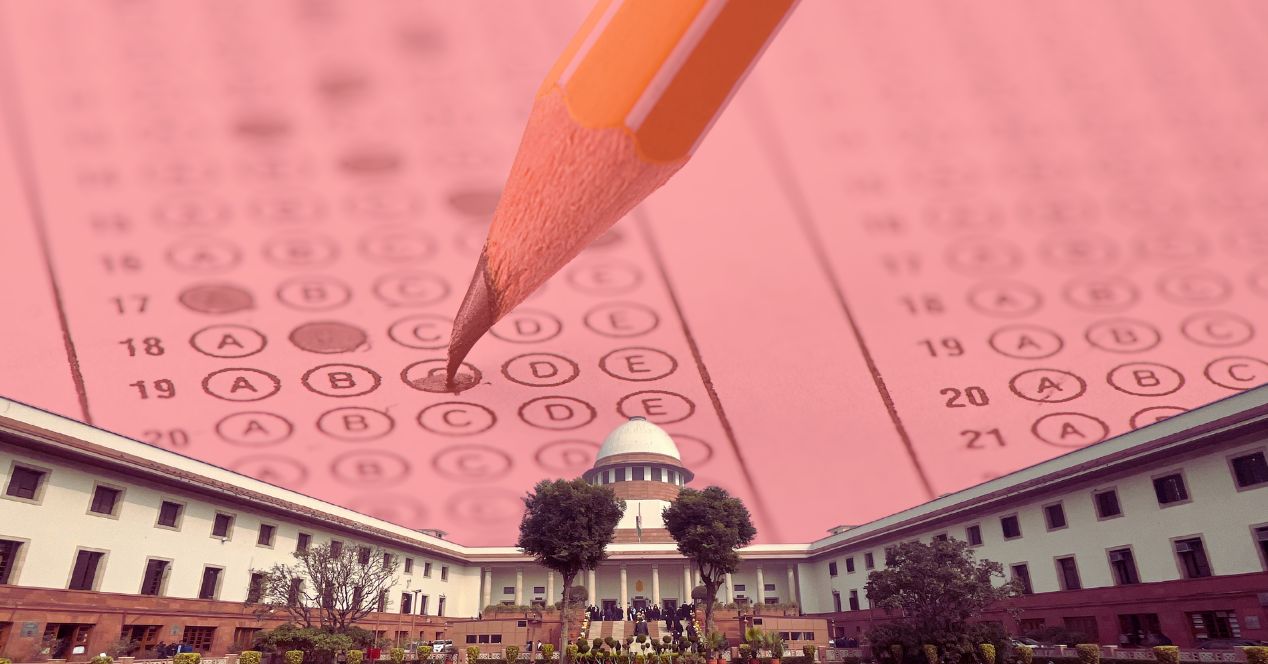Analysis
Supreme Court directs NTA to publish centre-wise results of 2024 NEET UG exam
Petitioners demanding a retest questioned the accuracy and completeness of a data analysis conducted by IIT-Madras on the exam results.

Today, a Division Bench led by Chief Justice D.Y. Chandrachud heard a slew of petitions seeking the retest of the 2024 Undergraduate National Eligibility cum Entrance Test (NEET UG). The bench directed the National Testing Agency (NTA) to publish the centre-wise results of all candidates by 12pm on Saturday, 20 July 2024.
The petitioners in the case alleged that there was a widespread leak of question papers, leading to an exponential increase in the number of students with high scores in the 550-720 range.
Previously, the Court had noted that the paper leak was an “undisputed fact” but remarked that a retest would be the last resort, and a decision on it could only be taken after assessing how widespread the leak was. On 8 July 2024, the Court had directed the National Testing Agency (NTA), which is responsible for conducting the NEET exam, to submit details about the exam. The Central Bureau of Investigation (CBI) is currently investigating the leak.
The NTA and the Union stated that a retest was not required as there were no large scale irregularities found. They relied on a data analytics report prepared by Indian Institute of Technology Madras (IITM). IITM’s report compiled and analysed data on multiple facets of the exam such as the scores of all the candidates who appeared for the exam. The data also included a city and centre-wise breakdown of the top 100 candidates who secured the most marks in the exam.
During the hearing today, Senior Advocate Narender Hooda, opening the arguments for the petitioners, stated that they did not have access to a lot of the data compiled by the CBI. In response, the bench clarified that even as this was not a “sealed cover” investigation, disclosing the CBI information now would impact the investigation.
The petitioners also submitted that the IITM report did not paint an accurate picture. Senior Advocate Naresh Kaushik appeared for the NTA and Solicitor General Tushar Mehta appeared for the Union government, maintaining that the IITM report was reliable.
The bench went to great lengths to understand the data compiled by IITM. Some broad points noted by the bench are summarised below:
- A total of 23,33,000 students wrote the UG NEET Examination in 2024.
- The maximum number of candidates who can get admission through NEET in government and private colleges is 1,08,000.
- 56,000 seats are available in government colleges and 52,000 seats are available in private colleges.
- Over 38 petitions (involving 131 petitioners) lie before the bench seeking a retest.
Mehta explained that the 131 petitioners who were seeking a retest were not part of the 1,08,000 students who got a seat. He also informed the bench that about 254 candidates who had gotten admission filed Interim Applications opposing a retest. There were also some petitioners who had qualified, but still wanted a retest.
Petitioners: The IITM report does not give accurate information
At the outset, Hooda argued that the data charts compiled by IITM did not adequately detect the abnormality in the exam. He claimed that the chart covers all the 23,33,000 students who participated in this year’s exam. This was too wide a data-set, in which every dot on the graph was indicative of thousands of students. This large data set, he submitted, could not adequately reflect the granular variations or abnormalities in data.
To gauge the abnormality more accurately, Hooda said, the sample pool should have been only the 1,08,000 students who were selected and not all the 23,33,000 students who appeared for the exam. Further, this year’s data had to be compared to the numbers from 2022 and 2023.
The second chart compiled by the IITM shows city-wise details about the top 100 candidates with the highest scores. Hooda contended that “the data is not complete” as it showed the details of just 17 students. He insisted that in certain centres, eight to nine students were selected from the same centre.
Solicitor General Tushar Mehta interjected to inform the bench that the data for all 100 candidates was indeed available. He stated that no suspicious concentration of candidates from one city could be seen from that data. The top 100 candidates were spread across 12 states and 1 Union Territory. 19 were from Rajasthan—the highest. Maharashtra followed with 12 candidates and Gujarat and Karnataka followed with seven each.
The perfect score
The petitioners had contended that 67 students had secured the perfect score of 720/720 in this year’s exam—six of them for the same centre. Today, Mehta clarified that the real number was 61 and not 67, as six were awarded grace marks due to loss of time at Jhajjar centre.
The NTA also stated that 44 out of these 61 students were given grace marks as there was a revised answer sheet and the candidates had answered the questions perfectly as per the old one based on the answers in the NCERT books. .
Later in the hearing, the Chief remarked that the extent of leak depended on what happened with the remaining 17 candidates who secured the perfect score. Mehta also informed the bench that these 17 students were spread across centres in India.
The “exponential inflation” in marks obtained
A key observation made by the petitioners was that there was an overall exponential increase in the marks obtained by all students.
The NTA on its part stated that this occurred due to two main reasons:
- There was a 22-25 percent decrease in this year’s syllabus.
- More students appeared for the exams than last year, therefore the average score was inevitably higher.
Hooda countered that there was an increase in the syllabus in certain subjects like physics and chemistry but the NTA had failed to disclose them. “There is not a whisper” by the NTA on this, he said.
Relying on the annual data since 2021, Hooda pointed out that the increase in the number of candidates appearing for the NEET exam over the year was gradual—2024 did not see an unusual spike. Chief Justice Chandrachud did some quick mental maths and remarked that on average, there was an increase of 32 percent every year.
Multiple windows for fresh applications
In an attempt to assess the full extent of the leak and its nature, the bench patiently enquired about the processes at various stages.
As it turns out, the original window to apply for the 2024 NEET UG exam was spread over two days in March 2024. However, between 11 and 15 April, another window was opened. The NTA and the Union argued that this window was opened to give effect to an order of the Rajasthan High Court. The petitioners, however, argued that the High Court’s order pertained to just one candidate who was allowed to reapply. That was a case concerning unpaid fees. The NTA, however, reopened the window for all participants. Upon the bench’s enquiry, it was found that during this window, an additional 15,085 students applied for the exam. 45 of them made it to the final 1,08,000 pool of selected students.
This aside, there is also a two-day window during which applicants are allowed to make corrections to their application forms. The bench enquired how many applicants changed their exam centres during this window. Mehta and Kaushik informed thet bench that the centres assigned to each candidate were computer-generated and could not be changed upon the applicant’s request. During the correction window, the applicants could only request for a change in the city of the exam, not the specific centre. The approval of this request depended on the permanent address or the residing address of the applicant.
The Hazaribagh-Patna leak
An undisputed leak of the 2024 NEET UG question paper had occurred in Hazaribagh and Patna.. The bench is assessing how widespread this leak was in order to decide whether a retest is needed.
The petitioners submitted that the leak, which originated in Hazaribagh and later spread to Patna from there, occurred two days before the exam. First, they submitted that the question papers which were dispatched from the printing press were in the possession of a private courier company before being delivered to the State Bank and Canara Banks of different cities for safekeeping.
Second, they said that in Hazaribagh the papers were transported in an e-rickshaw without any security.
Third, owing to some confusion, they were delivered to a school named Oasis, instead of the State Bank, and the principal of the school received the papers.
The petitioners also claimed that on 3 May the paper was circulated on a Telegram channel. The NTA, on its part, stated that the news about the leak on 3 May was fake and that the paper got leaked only after the exam day.
Mehta also stated that leak could only have occurred between a 40-minute window on the morning of the exam as there was CCTV footage to corroborate that the storage trunks in which the papers were kept was secure until that point.
CJI Chandrachud appeared unconvinced. He asked how it was possible for 180 questions to be both answered and then shared with candidates in Patna within just 40 minutes. Mehta responded that seven people worked to achieve this. They divided the question between them and then circulated the answers to all.
Further, he indicated that widespread circulation could not have been possible, as the “gang members” who controlled the leak ensured that students were not allowed click photographs. This was because many parents had not completed payment for the paper or had paid the “gang” with post-dated cheques. So, Mehta explained, even the students who were able to access the paper could not have shared it widely.
When the petitioners alleged that a similar situation had transpired in Godhra, the respondents clarified that in Godhra, there was no question paper leak. Rather, a person named Tushar Bhat, who was incharge of a particular centre, offered to share the solved answer sheet to candidates for money.
The bench remarked that the Hazaribagh-Patna incident had to be investigated. The Chief stated that if the paper leak happened days before the exam, the leak would be more widespread than if it occurred just hours before the exam.
Bench: Centre-wise data on candidates necessary to prove paper leak
Towards the end of the day’s hearing, the bench asked the NTA to publish the centre-wise results of all the candidates who appeared for this year’s NEET UG exam. Mehta and the NTA resisted the idea of disclosing centre details as the privacy of the students was at stake. The Chief however, stated that it was necessary to have centre-wise data to enable the petitioners to make their case. The bench directed that the identities of the students be masked with fake numbers to preserve their privacy. The NTA is to disclose this data by 12pm on 20 July 2024.
The bench didn’t engage with the petitioners’ request to stay the counselling process while the matter was sub-judice.
Hearings in the case will continue on Monday, 22 July 2024.
Clarification: An earlier version suggested that the full marks that 61 students had received was an “impossible outcome” given the marking scheme. However, it was theoretically possible for candidates to achieve the perfect score—making it an “improbable but not impossible” outcome. We regret the error.



